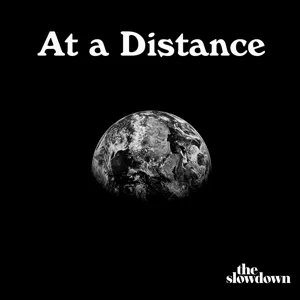Saeed Jones on the Profundity to Be Found in the Grieving Process

If there were a bard for our bewildering times, Saeed Jones would be a fitting choice. In his newly released collection of poems, Alive at the End of the World, Jones dances through grief, rage, and trauma—collective and personal—with acerbic clarity and sharp-edged wit. It is a book that gets to the heart of this confounding, erratic era, by turns reflecting on the tremendous amount of loss that has come with Covid-19; more broadly, the staggering, startling nature of living through a pandemic; the unignorable realities of climate disaster; the ongoing dangers of being Black and queer in the face of systemic racism, homophobia, and white supremacy; and, individually, the 2011 death of his mother and the past decade he has spent wallowing, mourning, mending, processing, and growing in the aftermath. Following his two previous books—the 2019 coming-of-age memoir How We Fight for Our Lives and the 2014 poetry collection Prelude to Bruise—Alive at the End of the World is only sort of a hyperbolic, if coy, title. “This human era we’re in is wild,” Jones says on this episode of Time Sensitive. “I am not here to tell people, ‘Oh, it has always been this calamitous.’ No! We are in an era of instability, destability. It’s bad, and I think we need to be real about that.”
There’s a blunt, let’s-not-beat-around-the-bush quality to Jones’s work—he intentionally and directly addresses harsh, gut-punching realities that many of us would rather ignore. But he does so in ways that are alluring, and that draw readers in. Wading through the tough stuff, slowly, thoughtfully, and with good humor, Jones gets to higher truths and finds meaningful connection points.
Also on this episode, Jones talks with Spencer about growing up Black and queer in the suburban city of Lewisville, Texas; how the murders of James Byrd, Jr., and Matthew Shepard haunted him throughout his teenage years and still do; and why, “in our culture right now, everything’s a proxy war, everything’s one-upmanship.”
Special thanks to our Season 6 sponsor, L’ÉCOLE, School of Jewelry Arts.
Show notes:
- Saeed Jones
- [03:36] Alive at the End of the World
- [05:41] “Deleted Voice Message: Hey, Robyn—It’s Me, Whitney”
- [05:41] “A Spell to Banish Grief”
- [07:03] “Saeed, How Dare You Make Your Mother Into a Prelude”
- [14:18] “Okay, One More Story”
- [16:31] “The Dead Dozens”
- [25:05] “Diahann Carroll Takes a Bath at the Beverly Hills Hotel”
- [48:07] How We Fight for Our Lives: A Memoir
- [52:09] Prelude to Bruise
- [52:09] “Jasper, 1998”
- [01:13:55] “Self-Portrait of the Artist as Ungrateful Black Writer”
